CNAF ‘ 2015
Nov 18-19, 2015 | Science City, Guangzhou, China
Event Description
Nucleic acids science and technologies experience tremendous progress and changes. The conference will feature 20+ prominent experts discussing latest advances in nucleic acids research and development, including:
1. Frontier science (genomics, ncRNA, RNP)
2. Cutting-edge technologies (NGS, CRISPR, RNAi)
3. Diagnostics and biomarkers
4. Therapeutics and other applications
Agenda
|
Day 1 Wednesday, November 18 |
||
| 08:45-08:55 | Opening | Organizers |
| 08:55-09:00 | Chair | Takanori Yokota, MD, PhD |
| 09:00-09:45 | Keynote | Eric D. Green, MD, PhD, Director, National Human Genome Research Institute (NHGRI), NIH, USA Title: Human genomics, precision medicine, and advancing human health |
| 09:45-10:15 | Oleg Iartchouk, PhD, Global Head of Genomics, Novartis, USA Title: NGS in drug discovery research |
|
| 10:15-10:45 | Tea Break | |
| 10:45-11:15 | Todd Lowe, PhD, Professor, University of California Santa Cruz, USA Title: Unraveling the complex roles for 500+ human tRNA genes and the ubiquitous, overlooked tRNA fragments |
|
| 11:15-11:45 | Mark A. Kay, MD, PhD, Professor, Stanford University School of Medicine, USA Title: New adeno associated vector (AAV) approaches for episomal and site-specific integration based gene/RNAi therapeutics |
|
| 11:45-12:00 | Technology | Huanming Yang, PhD, Professor and Chairman, BGI, China Title: From the HGP to “Precision Medicine” |
| 12:00-13:30 | Lunch | |
| 13:30-13:35 | Chair | Laura Sepp-Lorenzino, PhD |
| 13:35-14:20 | Keynote | Jack W. Szostak, PhD, Professor, Harvard Medical School, 2009 Nobel Prize Winner, USA Title: The origins of cellular life |
| 14:20-14:50 | Takanori Yokota, MD, PhD, Professor, Tokyo Medical and Dental University, Japan Title: DNA/RNA heteroduplex oligonucleotide – a novel concept of therapeutic oligonucleotides |
|
| 14:50-15:20 | Tea Break | |
| 15:20-15:50 | Seyed M. Moghimi, PhD, Professor, University of Copenhagen, Denmark Title: Integrative nanomedicine: phage-derived peptidic assemblies for therapeutic nucleic acid delivery targeting two receptors |
|
| 15:50-16:20 | Daniel G. Anderson, PhD, Professor, Massachusetts Institute of Technology, USA Title: Nucleic acid delivery systems for RNA therapy and gene editing |
|
| 16:20-16:50 | A. Robert Macleod, PhD, Vice President, Isis Pharmaceuticals, USA Title: Next generation constrained ethyl (cEt) antisense oligonucleotide inhibitors for therapeutic targeting of extra hepatic tissues including tumors |
|
| 16:50-17:00 | Day End | Organizers |
|
Day 2 Thursday, November 19 |
||
| 08:50 – 09:00 | Chair | Nikolaus Rajewsky, PhD |
| 09:00-09:45 | Keynote | Craig C. Mello, PhD, Professor, University of Massachusetts, 2006 Nobel Prize Winner, USA Title: RNA guided genome surveillance |
| 09:45-10:15 | Michael P. Terns, PhD, Professor, University of Georgia, USA Title: CRISPR-Cas: small RNA mediated prokaryotic immune systems |
|
| 10:15-10:45 | Tea Break | |
| 10:45-11:15 | Udi Qimron, PhD, Professor, Tel Aviv University, Israel Title: CRISPR/Cas-encoding bacteriophages programmed to sensitize and kill antibiotic-resistant bacteria |
|
| 11:15-11:45 | Joanne Kamens, PhD, Executive Director, Addgene, USA Title: Trends in CRISPR technologies: data from Addgene’s plasmid repository |
|
| 11:45-12:00 | Technology | Xingwang Fang, PhD, Thermo Fisher Scientific, USA Title: Sample prep for next generation molecular testingXiquan Liang, PhD, Thermo Fisher Scientific, USA Title: Rapid and highly efficient mammalian cell engineering via Cas9 protein transfection |
| 12:00-13:30 | Lunch | |
| 13:30-13:35 | Chair | Mark A. Kay , MD, PhD |
| 13:35-14:20 | Keynote | Thomas A. Steitz, PhD, Professor, Yale University, 2009 Nobel Prize Winner, USA Title:From the structure and function of the ribosome to new antibiotics |
| 14:20-14:50 | Nikolaus Rajewsky, PhD, Professor, Max Delbrück Center for Molecular Medicine, Germany Title: Regulatory RNAs |
|
| 14:50-15:20 | Tea Break | |
| 15:20-15:50 | Zhou Songyang, PhD, Professor, Sun Yat-sen University, China; Baylor College of Medicine, USA Title: Gene editing in mouse and human cells |
|
| 15:50-16:20 | Dong-ki Lee, PhD, Professor, Sungkyunkwan University, South Korea Title: Therapeutic development using the second generation RNAi triggers |
|
| 16:20-16:50 | Laura Sepp-Lorenzino, PhD, Vice President, Alnylam Pharmaceuticals, USA Title: Hepatocyte targeted RNAi therapeutics: case studies in rare diseases and hepatitis B |
|
| 16:50-17:00 | Closing | Craig C. Mello, PhD, Professor, University of Massachusetts, 2006 Nobel Prize Winner, USA |
Sponsors & Media

Gold

Silver

Bronze





Exhibitors








Media


Speakers
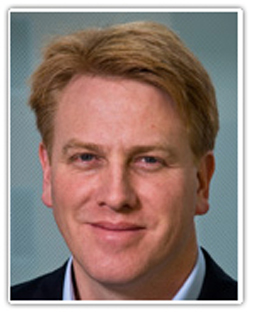
Daniel G. ANDERSON, PhD
Professor, Massachusetts Institute of Technology, USA
Presentation Title
Summary
High throughput, combinatorial approaches have revolutionized small molecule drug discovery. Here we describe our work on high throughput methods for developing and characterizing RNA delivery and gene editing systems. Libraries of degradable polymers and lipid-like materials have been synthesized, formulated and screened for their ability to delivery RNA, both in vitro and in vivo. A number of delivery formulations have been developed with in vivo efficacy, and show potential therapeutic application for the treatment of genetic disease, viral infection, and cancer.
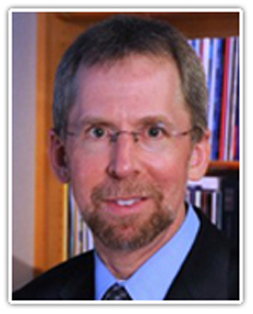
Eric D. GREEN, MD, PhD
Director, National Human Genome Research Institute (NHGRI), NIH, USA
For over a quarter century, Dr. Green has been at the forefront of efforts to map, sequence, and understand eukaryotic genomes. His work included significant, start-to-finish involvement in the Human Genome Project; these initial efforts latter blossomed into a highly productive program in comparative genomics that provided important insights about genome structure, function, and evolution. Now, as Director of NHGRI, Dr. Green is responsible for providing overall leadership of the Institute’s research portfolio and other initiatives. In 2011, Dr. Green led NHGRI to the completion of a strategic planning effort that yielded a new vision for the future of genomics research, entitled “Charting a course for genomic medicine from base pairs to bedside” (Nature, 470:204-213, 2011).
Dr. Green received his BS in bacteriology from the University of Wisconsin at Madison in 1981 and both a PhD in cell biology and an MD in 1987 from Washington University in St. Louis. For his PhD, Dr. Green studied sugar molecules that are attached to proteins. From 1987 to 1992, he was a resident in laboratory medicine at the Washington University School of Medicine, serving as Co-Chief Resident from 1990 to 1992. Discussions about a possible Human Genome Project in the late 1980s coupled with his clinical interests in molecular diagnostics prompted him to join the laboratory of Maynard V. Olson, Ph.D. as a postdoctoral research fellow to work in the then-emerging field of genomics. In 1992, Dr. Green was appointed Assistant Professor of Pathology, Genetics, and Internal Medicine at the Washington University School of Medicine, as well as Co-Investigator in the University’s Human Genome Center. In 1994, Dr. Green was recruited to join the newly formed Intramural Research Program of the then-named National Center for Human Genome Research (NCHGR) at the National Institutes of Health. Two years later, he earned tenure; that same year, he was also appointed Chief of the Genome Technology Branch. In 1997, he became the Founding Director of the NIH Intramural Sequencing Center (NISC). Dr. Green then became the third Director of the National Human Genome Research Institute (NHGRI) in December 2009.
Honors given to Dr. Green include a Helen Hay Whitney Postdoctoral Research Fellowship (1989-1990), a Lucille P. Markey Scholar Award in Biomedical Science (1990-1994), induction into the American Society for Clinical Investigation (2002), an Alumni Achievement Award from Washington University School of Medicine (2005), induction into the Association of American Physicians (2007), a Distinguished Alumni Award from Washington University (2010), the Cotlove Award from the Academy of Clinical Laboratory Physicians and Scientists (2011), and the Wallace H. Coulter Lectureship Award from the American Association for Clinical Chemistry (2012). He is a Founding Editor of the journal Genome Research (1995-present) and a Series Editor of Genome Analysis: A Laboratory Manual (1994-1998), both published by Cold Spring Harbor Laboratory Press. He is also Co-Editor of Annual Review of Genomics and Human Genetics (since 2005). Dr. Green has authored and co-authored over 300 scientific publications.
Presentation Title
Summary
Augmenting the advances in human genomics have been innovations in technologies for measuring environmental and lifestyle information, electronic health records, and data science; together, these provide opportunities of unprecedented scale and scope for investigating the underpinnings of health and disease. To capitalize on these opportunities, U.S. President Barack Obama recently announced a major new research endeavor— the U.S. Precision Medicine Initiative. This bold effort will be framed around several key aims, which include accelerating the use of genomically informed approaches to cancer care, making important policy and regulatory changes, and establishing a large research cohort of >1 million volunteers to facilitate precision medicine research. The latter will include making the partnership with all participants a centerpiece feature in the cohort’s design and development. The Precision Medicine Initiative represents a broad-based research program that will allow new approaches for individualized medical care to be rigorously tested, so as to establish a new evidence base for advancing clinical practice and, eventually, human health.
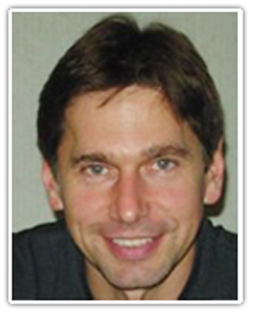
Oleg IARTCHOUK, PhD
Global Head of Genomics, Novartis, USA
Presentation Title
NGS in drug discovery research
Summary
Next generation sequencing is the breakthrough technology that promotes big data driven approaches in drug discovery research. Several examples of successful NGS applications that create new paradigm will be presented and explained. Future trends for next generation sequencing will be outlined.
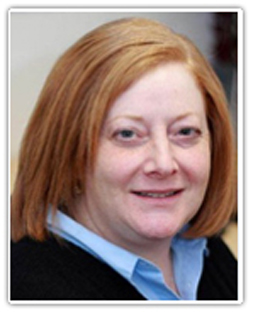
Joanne KAMENS, PhD
Executive Director, Addgene, USA
Presentation Title
Summary
Addgene has played a unique role in the rapidly expanding field of CRISPR/Cas9-mediated genome engineering. In January 2013, the first papers describing the use of CRISPR/Cas9 for genome engineering were published and many of the early leaders in this field were already strong supporters of Addgene’s mission. Addgene’s “open source” distribution model has facilitated rapid advances in the field. A search of google.scholar with the words “CRISPR AND Addgene” retrieves >1,400 publications, demonstrating the impact of efficient materials dissemination to support rapid paths to novel findings and publications. Data on distribution of plasmids for various genome engineering technologies will be presented along with an overview of the many available reagents in the Addgene Collection.
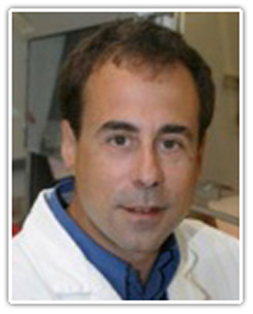
Mark A. KAY, MD, PhD
Professor, Stanford University School of Medicine, USA
Dr. Kay is the Head of the Division of Human Gene Therapy and serves as the Associate Chair of Research in Pediatrics. He received a Ph.D. in Developmental Genetics, and M.D. from Case Western Reserve in Cleveland, Ohio. Before coming to Stanford in 1998, Dr. Kay was at the University of Washington as Associate Professor in the Departments of Medicine, Biochemistry and Pathology. Dr. Kay has received many awards. Dr. Kay was on the founding board of directors of the American Society for Gene Therapy and served as the Society’s Vice-President, President-Elect, and President in 2003-2006. He is on Board of Directors of the Oligonucleotide Therapeutics Board of Directors. He was elected to the Association of American Physicians in 2010. Dr. Kay received the American Society for Gene and Cell Therapy’s Outstanding Investigator Award in 2013. He is a scientific founder of Voyager Therapeutics and LogicBio Therapeutics.
Dr. Kay has published over 250 scientific papers. The focus of the laboratory is to establish the scientific principles required for gene and nucleic acid transfer for the treatment of genetic and acquired diseases. Dr. Kay has worked on the development of many DNA gene transfer vectors and the mechanism by which they transduce tissues in mammals. His group has performed two Phase I/II gene therapy trials for hemophilia B. His laboratory was the first to establish therapeutic RNAi in whole non-embryonic mammals, and RNAi-mediated inhibition of a human viral pathogen (HBV) in animals. His work continues towards defining the molecular limits of delivered and expressed RNAi in vivo as well as the mechanisms involved in si/shRNA -mediated gene silencing and the biological mechanisms involved in miRNA-mediated gene repression. In addition, his laboratory is studying the role that a newly discovered small non-coding RNA plays in mammalian gene regulation.
Presentation Title
Summary
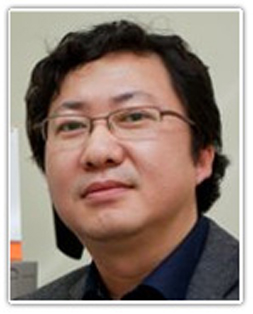
Dong-ki LEE, PhD
Professor, Sungkyunkwan University, South Korea
Chief Executive Officer, OliX Pharmaceuticals
Prof. Dong-ki Lee received B. S. in Chemistry from Korea Advanced Institute of Science and Technology (KAIST) in 1993, and Ph. D. in Biochemistry from Cornell University in 1999. After post-doctoral training in Pohang University of Science and Technology (POSTECH), Toolgen Inc., and KAIST, he joined POSTECH as an assistant professor in 2004. In 2008, He moved to Sungkyunkwan University and is a full professor of Chemistry since 2012. In 2008, Prof. Lee was selected as the principal investigator of the Global Research Laboratory program, funded by Korean government, to develop novel RNAi medicine. He is currently serving as the Asian editor of “Nucleic Acid Therapeutics” and a editorial board member of “Molecular Therapy: Nucleic Acids”. His work on novel siRNA structures, nucleic acid aptamers, and eukaryotic gene regulation has been published as over 70 papers including prestigious journals such as Nature, Cell, PNAS, and Molecular Therapy. In 2010, he founded OliX Pharmaceuticals, a RNAi therapeutics company focusing on topically administrable diseases, and serves as Chief Executive Officer.
Presentation Title
Summary
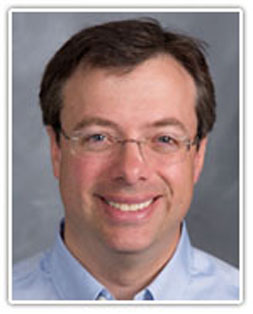
Todd LOWE, PhD
Professor, University of California Santa Cruz, USA
Co-founder and Chief Scientist, Maverix Biomics
Todd Lowe earned his Ph.D. in molecular genetics from Washington University in St. Louis in 1999, and helped identify the non-coding RNA genes in many of the first eukaryotic and archaeal genomes sequenced using his search tools. He then studied as a post-doctoral scholar at Stanford University with David Botstein in the Functional Genomics microarray group. Dr. Lowe was recruited to the University of California, Santa Cruz in 2001 to co-found the Department of Biomolecular Engineering, where he integrates molecular and computational biology to investigate non-coding RNAs and RNA-based gene regulation. With software developed in his lab and analyses distributed by the Genomic tRNA Database, Dr. Lowe has become a world expert in tRNA biology. Most recently, Dr. Lowe’s lab has been studying the functional impacts of dynamic RNA modification in the cell, including the dense, poorly understood modifications in transfer RNAs, and the ubiquitous tRNA fragments found in the cell and extracellular microvesicles. Dr. Lowe’s lab develops new RNA-seq library construction methods paired to custom computational analytics to enable exploration of these new frontiers of RNA biology.
Presentation Title
Unraveling the complex roles for 500+ human tRNA genes and the ubiquitous, overlooked tRNA fragments
Summary
High throughput RNA sequencing has accelerated discovery of the regulatory roles of many small RNAs, but RNAs containing “hard stop” modifications have largely escaped detection due to interference with reverse transcription during RNA-seq library preparation. I will describe new methods that enable transcriptome-scale mapping of highly modified RNAs, as well as an efficient method to identify and monitor changes in the abundance or modification state of any small RNA with these modifications. Using these methods, we are finally able to begin unraveling the complex regulatory programs of hundreds of unique human tRNAs, as well as to explore the large number of mostly overlooked tRNA-derived RNAs, some of which have already been linked to control of global translation rates, cancer cell proliferation, apoptosis, and core metabolic pathways.
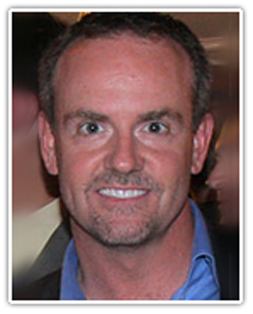
A. Robert MACLEOD, PhD
Vice President, Ionis Pharmaceuticals, USA
Dr. MacLeod is currently the Vice President of Oncology Drug Discovery at Ionis Pharmaceuticals, a biotechnology company focused on RNA targeted therapeutics. Dr. MacLeod obtained his undergraduate degree in Chemistry and Biochemistry from Concordia University in Montreal, Canada and his doctoral degree from McGill University, Montreal in 1995. As part of his Ph.D studies, Dr. MacLeod demonstrated for the first time that Epigenetic regulators of gene expression (the DNA Methyltransferase enzymes) played active roles in cancer and that these were in fact attractive cancer drug targets. His Doctoral work led to the creation of MethylGene Inc. a biotechnology company focused on small molecule inhibitors of Epigenetic targets. Dr. Macleod later became the first scientist and Director of Biology at MethylGene, and contributed to the discovery and clinical evaluation of several experimental oncology therapeutics including, Mocetinostat, MGCD265, MGCD516 and MG98. Dr. MacLeod gained his initial experience in antisense technology as a Post-Doctoral fellow at Ionis Pharmaceuticals under the supervision of Dr. Stanley T. Crooke (Chairman and CEO of Ionis). In this capacity he contributed to the identification of novel, non-RNase H terminating mechanisms for antisense drugs. Since returning to Ionis in 2008, Dr. MacLeod has been actively involved in the discovery and preclinical development of antisense drug candidates in the several therapeutic areas including, oncology, thrombosis, inflammatory and muscle diseases. These include the clinical stage compounds, FXIRX (now partnered with Bayer) for the treatment of thrombosis, DMPKRX for myotonic dystrophy (now partnered with Biogen) and PKKRX for angioedema. Under his direction the oncology team identified and advanced into clinical development the first two Generation 2.5 cEt ASOs STAT3RX(now AZD9150) and ARRX (now AZD5312), where robust single agent antitumor responses were demonstrated with STAT3RX in several tumor types, ultimately leading to the creation of a broad strategic collaboration between Ionis and AstraZeneca focused on the discovery and development of antisense drugs for the treatment of cancer.
Presentation Title
Next generation constrained ethyl (cEt) antisense oligonucleotide inhibitors for therapeutic targeting of extra hepatic tissues including tumors
Summary
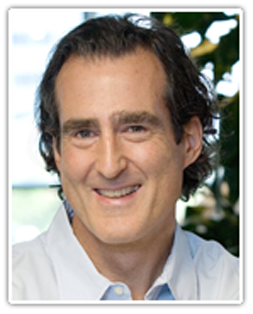
Craig C. MELLO, PhD
Professor, University of Massachusetts, USA
Howard Hughes Medical Institute
National Academy of Sciences
2006 Nobel Prize in Physiology or Medicine
Dr. Mello’s lab uses the nematode C. elegans as a model system to study embryogenesis and gene silencing. His collaborative work with Dr. Andrew Fire led to the discovery of RNA interference (RNAi), for which they shared the 2006 Nobel Prize in Physiology or Medicine. Together they showed that when C. elegans is exposed to double-stranded ribonucleic acid (dsRNA), a molecule that mimics a signature of viral infection, the worm mounts a sequence-specific silencing reaction that interferes with the expression of cognate cellular RNAs. Using readily produced short synthetic dsRNAs, researchers can now silence any gene in organisms as diverse as rice and humans. RNAi allows researchers to rapidly “knock out” the expression of specific genes and, thus, to define the biological functions of those genes. RNAi also provides a potential therapeutic avenue to silence genes that cause or contribute to diseases.
Dr. Mello received his BS degree in Biochemistry from Brown University in 1982, and PhD from Harvard University in 1990. From 1990 to 1994, he conducted postdoctoral research at the Fred Hutchinson Cancer Research Center in Seattle, WA. Now Dr. Mello is an Investigator of the Howard Hughes Medical Institute, the Blais University Chair in Molecular Medicine and Co-director of the RNA Therapeutics Institute at the University of Massachusetts Medical School.
Besides the Nobel Prize, Dr. Mello’s work was recognized with numerous awards and honors, including the National Academy of Sciences Molecular Biology Award (2003), the Wiley Prize in Biomedical Sciences from Rockefeller University (2003), Brandeis University’s Lewis S. Rosnstiel Award for Distinguished Work in Medical Research (2005), the Gairdner Foundation International Award (2005), the Massry Prize (2005), the Paul Ehrlich and Ludwig Darmstaedter Award (2006), the Dr. Paul Janssen Award for Biomedical Research (2006), the Hope Funds Award of Excellence in Basic Research (2008). He is a member of the National Academy of Sciences, the American Academy of Arts and Sciences, and the American Philosophical Society.
Presentation Title
RNA guided genome surveillance
Summary
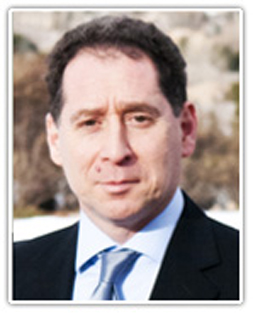
Seyed M. MOGHIMI, PhD
Professor, University of Copenhagen, Denmark
Seyed Moghimi earned his PhD in biochemistry in 1989 from Charing Cross Hospital Medical School, Imperial College (University of London). Afterwards, he completed a four-year post-doctoral training programme in Advanced Drug Delivery Research at the School of Pharmaceutical Sciences (University of Nottingham, UK) under the guidance of Prof. S.S. Davis. This was followed by a university fellowship position at Nottingham before joining the School of Pharmacy at the University of Brighton as a Senior Lecturer. In 2009 Moein joined University of Copenhagen as Professor of Nanomedicine and became the Director of the Centre for Pharmaceutical Nanotechnology and Nanotoxiocology. He is also an affiliated full member at the Department of Translational Imaging, Houston Methodist Research Institute, Houston Methodist Hospital Systems (Houston, Texas), adjoint professor at the Department of Pharmaceutical Sciences, Skaggs School of Pharmacy and Pharmaceutical Sciences, University of Colorado-Denver Medical Center, and visiting professor at Università Degli Studi Di Padova (Italy). Furthermore, Dr. Moghimi is cofounder of S & M Discovery Group (London, UK); a nanomedicine R&D and consulting venture. He has also been practicing in the capacity of consultant to over 50 pharmaceutical, biotechnology, health and food industries as well as investment banks, management consultancy firms and other entrepreneurial enterprises worldwide. He further acts as associate editor for Nanomedicine: NBM and Journal of Biomedical Nanotechnology and features on editorial board of another 15 international journals in drug delivery and nanomedicine. His research activities are focused on pharmaceutical nanoscience, and fundamental nanomedicine and nanosafety. He has pioneered research in design and surface engineering of nanoparticles and functional nanosystems for parenteral site-specific targeting, drug delivery and imaging modalities, as well as the molecular basis of nanomaterial/polymer immune toxicity and cytotoxicity.
Presentation Title
Integrative nanomedicine: phage-derived peptidic assemblies for therapeutic nucleic acid delivery targeting two receptors
Summary
- Demonstration of a phage-derived peptidic self-assembly targeting two receptors in different geometries
- Peptide complexation with siRNA forming different geometries depending on siRNA structure
- Functional delivery of siRNA to target cells with unprecedented safety
- In vivo proof of targeting
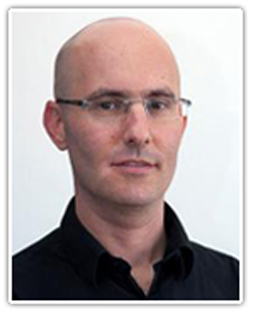
Udi QIMRON, PhD
Professor, Tel Aviv University, Israel
Dr. Qimron’s lab studies the interactions between bacteria and their viruses, the bacteriophages. Their studies are focused on the bacterial immune system against bacteriophages, the CRISPR-Cas system. Dr. Qimron’s lab pioneered studies on how the CRISPR-Cas system samples small DNA segments from bacteriophages to memorize them. His group was the first to demonstrate that two enzymes mediate this activity and showed the minimal genetic requirements for this memorization process. In collaboration with Dr. Sorek’s group from Weizmann Institute of Science, Israel, his group also recently revealed how self-memorization (and consequently autoimmunity) against the bacterial genome is prevented in the CRISPR-Cas immune system. In addition, Dr. Qimron’s group recently showed that the CRISPR-Cas system can be used as a new tool to selectively target antibiotic resistant bacteria.
Dr. Udi Qimron earned his Ph.D. (direct track) in Biology from Ben Gurion University, Israel, in 2004. He conducted his post-doctoral studies in the lab of Dr. Charles C. Richardson, at Harvard Medical School from 2004 to 2009. In 2009 he established his lab in the Medical School of Tel Aviv University, Israel, and was appointed to an associate professor in 2013.
Dr. Qimron studies are published in high-profile journals. He recently won the prestigious €1.5M European Research Council grant, and received the prestigious Bergmann award for an outstanding grant proposal.
Presentation Title
CRISPR/Cas-encoding bacteriophages programmed to sensitize and kill antibiotic-resistant bacteria
Summary
The increasing threat of pathogen resistance to antibiotics requires the development of novel antimicrobial strategies. I will present two studies, both based on a genetic strategy that aims to sensitize bacteria to antibiotics and selectively kill antibiotic-resistant bacteria. The strategy uses temperate phages to deliver sensitizing DNA cassettes into the genome of antibiotic-resistant bacteria. The delivered cassettes neutralize antibiotic resistance-conferring plasmids and provides a selective advantage. This linkage between antibiotic-sensitization and a selective advantage allows killing of only antibiotic-resistant bacteria while protecting antibiotic-sensitized bacteria. Phages designed according to this strategy may be used in animal husbandries, hospital surfaces and hand-sanitizers to facilitate replacement of antibiotic-resistant pathogens with sensitive ones.
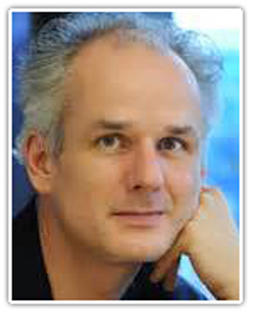
Nikolaus RAJEWSKY, PhD
Professor, Max Delbrück Center for Molecular Medicine, Germany
Nikolaus Rajewsky earned his Ph.D. in Theoretical Physics at the University of Cologne, Germany (1997). After a postdoctoral period at Rutgers University and at Rockefeller University, he was an “Assistant Professor for Biology and Mathematics” in the Department of Biology at New York University (2003-2006). In 2006 he became a full Professor at the Charite and the Max Delbruck Center for Molecular Medicine in the Helmholtz Association in Berlin, Germany. He conceived and directs the “Berlin Institute for Medical Systems Biology” (BIMSB). BIMSB is a new branch of the MDC and will grow to a size of ~25 PIs in downtown Berlin.
Nikolaus Rajewsky uses both computational and experimental molecular biology methods to study gene regulation in animals. A focus of his work is on the function and mechanisms of small non-coding RNAs and RNA binding proteins in development and stem cells. Nikolaus’ research has been cited over 13,000 times and has been featured in numerous high-ranking scientific journals and in the press. His latest awards include: IUBMB medal, FEBS award, “Berliner Wissenschaftspreis”, EMBO membership, and in 2012 the highest award for research in Germany, the “Leibniz Preis” of the DFG. Since 2008 he is also a “Global Distinguished Professor of Biology at New York University” and in 2014 has received on honorary PhD in Human Biology and Medical Genetics by Sapienza University of Rome, Italy.
Presentation Title
Regulatory RNAs
Summary
I will summarize our current efforts to understand more about circular RNAs (circRNAs). Recently, circRNAs (single-stranded covalently closed RNAs) have been reported to be widely and dynamically expressed during animal development. We have found that circRNAs are particularly highly expressed in neuronal cells and some other human tissues. I will report out latest insights into circRNAs biogenesis and function.
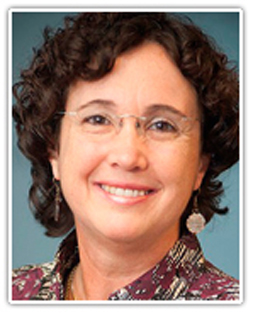
Laura SEPP-LORENZINO, PhD
Vice President, Entrepreneur in Residence, Alnylam Pharmaceuticals, USA
Dr. Sepp-Lorenzino joined Alnylam in 2014. Before joining Alnylam, Dr. Sepp-Lorenzino spent 14 years at Merck & Co., having most recently served as Executive Director and Department Head, RNA Therapeutics Discovery Biology. In this role, she was responsible for identification and optimization of siRNAs and delivery vehicles, advancement of pre-clinical candidates, and development of an siRNA-conjugate platform to expand the repertoire of tissues accessible to in vivo siRNA delivery. Prior to RNAi, Laura worked in oncology drug discovery and development, having led the Cancer Research Department at Merck West Point, and having been an Assistant Lab Member at Memorial Sloan-Kettering Cancer Center. Laura received her Professional Degree in Biochemistry from the University of Buenos Aires, and her M.S. and Ph.D. in Biochemistry from New York University.
Presentation Title
Hepatocyte targeted RNAi Therapeutics: case studies in rare diseases and hepatitis B
Summary
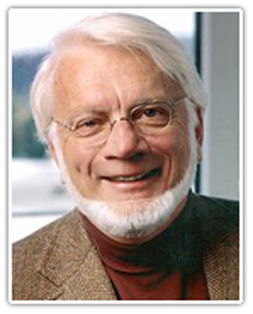
Thomas A. STEITZ, PhD
Professor, Yale University, USA
Howard Hughes Medical Institute
National Academy of Sciences
2009 Nobel Prize in Chemistry
Thomas A. Steitz is Sterling Professor of Molecular Biophysics and Biochemistry and Professor of Chemistry at Yale University as well as an Investigator of the Howard Hughes Medical Institute. He received a B.A. degree in chemistry from Lawrence University and a Ph.D. degree in molecular biology and biochemistry from Harvard. After postdoctoral research at the MRC Laboratory in Cambridge, England he joined the Yale faculty. He is a member of the U.S. National Academy of Sciences, the American Academy of Arts and Sciences and a Foreign Member of the Royal Society. He has received numerous prizes including the Keio Medical Science Prize, the Gairdner International Award and the 2009 Nobel Prize in Chemistry.
For the last three decades, research in the laboratory of Dr. Steitz has focused on obtaining structural insights into the molecular mechanisms by which the proteins and nucleic acids involved in the central dogma of molecular biology carry out gene expression from replication and recombination of the DNA genome to its transcription into mRNA followed by the various components associated with the translation of mRNA into protein. Perhaps the most significant insights have been derived from the atomic structure of the large ribosomal subunit, which proved that the ribosomal RNA is entirely responsible for catalyzing peptide bond formation and provided insights into how this mammoth RNA assembly is folded and functions as an enzyme. Most recently, research has focused on the structures of the 70S ribosome in complex with factors involved in various steps of the protein synthesis process. The many structures of the large subunit complexed with various different antibiotics determined at Yale have identified numerous different antibiotic binding sites near the site of protein synthesis.
Presentation Title
From the structure and function of the ribosome to new antibiotics
Summary
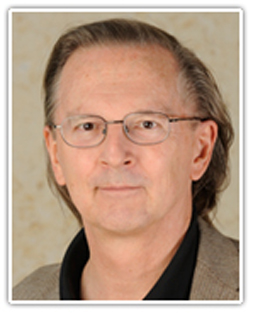
Jack W. SZOSTAK, PhD
Professor, Harvard Medical School, USA
Howard Hughes Medical Institute
National Academy of Sciences
2009 Nobel Prize in Physiology or Medicine
Dr. Szostak received his B.Sc. from McGill University in Montreal in 1972, and then conducted his graduate research under the supervision of Prof. Ray Wu at Cornell University, Ithaca, NY, obtaining his Ph.D. in 1977. Dr. Szostak then moved to the Sidney Farber Cancer Institute and Harvard Medical School in 1979, and then to Massachusetts General Hospital in 1984. During the 1980s he carried out research on the genetics and biochemistry of DNA recombination, which led to the double-strand-break repair model for meiotic recombination. At the same time Dr. Szostak made fundamental contributions to our understanding of telomere structure and function, and the role of telomere maintenance in preventing cellular senescence. For this work Dr. Szostak shared, with Drs. Elizabeth Blackburn and Carol Greider, the 2006 Albert Lasker Basic Medical Research Award and the 2009 Nobel Prize in Physiology or Medicine. In the 1990s Dr. Szostak and his colleagues developed in vitro selection as a tool for the isolation of functional RNA, DNA and protein molecules from large pools of random sequences. His laboratory used in vitro selection and directed evolution to isolate and characterize numerous nucleic acid sequences with specific ligand binding and catalytic properties. From 2000 until the present Dr. Szostak’s research interests have focused on the laboratory synthesis of self-replicating systems and the origin of life.
Presentation Title
The origins of cellular life
Summary
The earliest living cells must have had very simple structures in order to emerge spontaneously from the chemistry of the early earth. We are attempting to synthesize such simple artificial cells in order to discover plausible pathways for the transition from chemistry to biology. Very primitive cells may have consisted of a self-replicating nucleic acid genome, encapsulated by a self-replicating cell membrane. We have recently described robust pathways for the coupled growth and division of primitive cell membranes composed of fatty acids, which were likely to have been available prebiotically. However, no process for the replication of a nucleic acid genome, independent of evolved enzymatic machinery, has yet been described. I will discuss our recent progress towards the realization of an efficient and accurate system for the chemical replication of RNA.
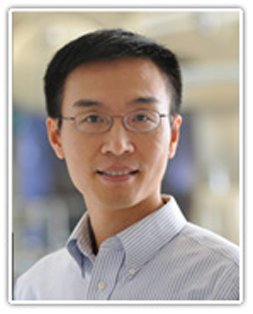
Songyang ZHOU, PhD
Professor, Baylor College of Medicine, USA
Professor, Sun Yat-sen University, China
ProfessionalExperience
1995 Ph.D.in Molecular Physiology, Tufts University, USA.
1995-1996 Postdoctoral Fellow, Harvard University,Cambridge, MA.
1996-1998 PostdoctoralFellow, Massachusetts Institute of Technology, Cambridge.
1998-2007 Assistant and Associate Professor, Departmentof Biochemistry and Molecular Biology, Baylor College of Medicine, Houston, TX
2008- Professor, Department of Biochemistry andMolecular Biology, Baylor College of Medicine, Houston, TX
2009- Director, SYSU-Baylor College of MedicineJoint Research Center for Biomedical Sciences, School of Life Sciences, SYSU,Guangzhou
Honors
1995 Scientist Most cited paper of the year (Mol. Cell.Biol. 14, 2777-85.)
1996-1998 Irvington Institute PostdoctoralFellowship
1999-2003 EllisonNew Scholar
2004 Article selected as one of 30 mostmemorable papers in 30-year history of the journal Cell (Cell, 72, 767-778)
2006 LLS scholar
2007 Michael Debakey Excellence of Research Award
Dr. Songyang is interested inthe molecular mechanisms that regulate cell survival, genome stability, stemcell pluripotency, and cancer initiation through proteomic and functionalgenomic approaches. Dr. Songyang’s majorresearch areas include telomeres and telomerase, DNA damage repair signaling,and embryonic stem cell self-renewal and differentiation. Dr. Songyang has also developed severaltechnology platforms to study protein-protein interactions and signalingpathways. He has published more than 110 papers in leading journals such asNature, Science, Cell, Nature Cell Biology, NSMB, Molecular Cell, PNAS, Curr.Biol., and JCB. His publications werecited more than 11,000 times.
Presentation Title
GeneEditing in mouse and human cells
Summary
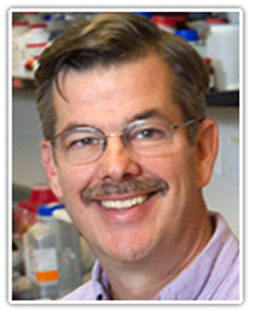
Michael P. TERNS, PhD
Professor, University of Georgia, USA
Dr. Michael Terns has a long-standing scientific interest in understanding non-coding RNA biology. Among his many accomplishments, Terns’ work has revealed the pathways that regulate the activity of telomerase, an enzyme that is essential to the development of most cancers. His research group has studied extensively the C/D and H/ACA small nucleolar RNPs, enzymes that build and support critical cellular machinery, which has provided key insights into the development of the fatal bone marrow disease dyskeratosis congenita and a common neuromuscular disease called spinal muscular atrophy. Most recently, Terns has conducted groundbreaking research into CRISPR-Cas systems, small RNA-based immune systems that protect bacteria from viruses and other threats. These systems are being employed as versatile genome editing tools and novel gene-knockdown platforms among other important biotechnological and biomedical applications.
Dr. Terns received his BS in Biochemistry from the University of Michigan in 1985 and his PhD from Pennsylvania State University in 1990 with Samson Jacob, where he studied mechanisms of pre-mRNA polyadenylation. He did his postdoctoral training at the University of Wisconsin in the laboratory of James Dahlberg, studying intracellular trafficking of small nuclear RNAs. Dr. Terns became a principal investigator in 1995 at The University of Georgia where he continues to carry out his research. He is an American Cancer Society Research Scholar and Distinguished Research Professor.
Additional information about Dr. Terns can be found in the following sites:
Presentation Title
CRISPR-Cas: small RNA mediated prokaryotic immune systems
Summary
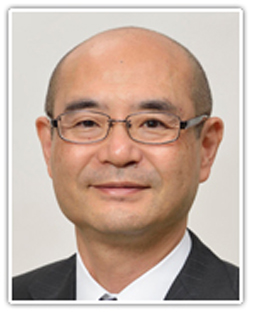
Takanori YOKOTA, MD, PhD
Professor, Tokyo Medical and Dental University, Japan
Takanori Yokota received Japanese National License of Medical Doctors in 1984 and the Ph.D. degree from Tokyo Medical and Dental University,Tokyo, Japan, in 1990.
From 1984, he served as a Neurologist at Tokyo Medical and Dental University ;
from 1998, as a Research Fellow in Bredesen’s lab in Burham Institute (CA, USA);
from 1999, as a Research Fellow in Bredesen’s lab in Buck Center for Aging Research (CA, USA);
from 2000, as a Assistant Professor in Neurology at Tokyo Medical and Dental University;
2004, as a Associate Professor in Neurology at Tokyo Medical and Dental University.
From2010 to the present, he serves as a Professor in Neurology at Tokyo Medical andDental University.
His major interest includes gene therapy of neurological diseases.
Dr. Yokota is a scientific board of Oligonucleotide Therapy Society (OTS)
Award:
2006 Award of 20th Meeting of Japanese Society of Neuroimmunology
Presentation Title
DNA/RNA heteroduplex oligonucleotide – a novel concept of therapeutic oligonucleotides
Summary
Nucleic acids science plays a key role in precision medicine, genetic therapy and new solutions for human health. Continuous discovery of new RNA functions and constant emergence of innovative nucleic acids technologies are driving forces for the field and hold enormous promise for the future scientific and technological progress. The China Nucleic Acids Forum (CNAF) led by Nobel Prize winners is an international forum at the forefront of these developments, aims to push forward communications and collaborations in and abroad, and has been successfully held five times since 2013. The CNAF has attracted high-profile speakers, including Nobel Prize winners, to highlight recent advances in nucleic-acid based medicine, scientific discoveries, diagnostics and industrial trends. It has been widely recognized as the premier forum in Asia for advancing nucleic acids research and drug development. The 2019 CNAF will feature 20+ globally prominent experts discussing the latest advances in nucleic acids research and development.
© 2013-16 China Nucleic Acids Forum (CNAF) | 粤ICP备05022931号-2


